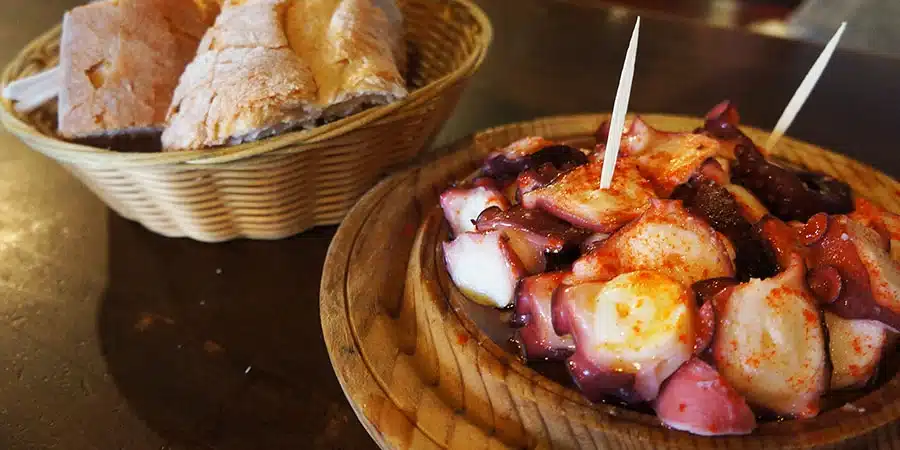Food is an essential and fascinating part of travel and, of course, the Camino food experience is something you won’t want to miss out on. There are many wonderful reasons to walk the Camino de Santiago and the food on the Camino is a highlight for many.
The Camino de Santiago crosses many different regions and even country borders, all with their own unique flavours and delicacies. Each route and region along the Camino has unique flavours, traditions and dishes. Our advice, of course, is to try everything!
From the mountain cheese of the Pyrenees to the seafood of Galicia, pintxos in the Basque Country and sweet treats in Portugal, there is a treat for your tastebuds in every town and city.
Table of contents
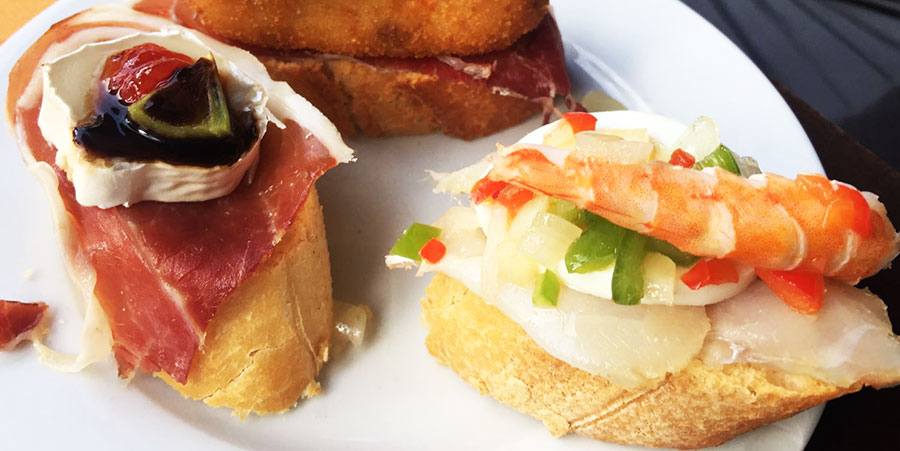
Food on the Camino de Santiago
As you walk the main routes, you will come across many typical dishes. Our favourites are the Pulpo a la Gallega (Octopus), Patatas Bravas (potatoes), Zamburina (small scallop shells), Navaras (Razor clams). All of these delicious dishes go excellently with a generous glass of Albariño white wine or a Rioja tempranillo red. We’ve compiled some of our favourite dishes from the popular Camino routes below:
- 10 most delicious Galician dishes on the Camino
- Top 10 Camino Portugues foods
- Our 7 favourite tapas
- Food on the Via Francigena

Camino del Norte – A Food Lover’s Paradise
If you know anything about food and the Camino de Santiago, then I’m sure the foodie capital of Spain is high on your list. San Sebastian is known worldwide for the number of high-quality restaurants there. In fact, the city has 11 Michelin Star restaurants. The quality of the produce and the care these chefs put into their food is evident.
And this doesn’t just go for the high-end restaurants. If you would like to experience all the Camino del Norte and San Sebastian has to offer, we’d recommend walking from San Sebastian to Bilbao over the course of one week.
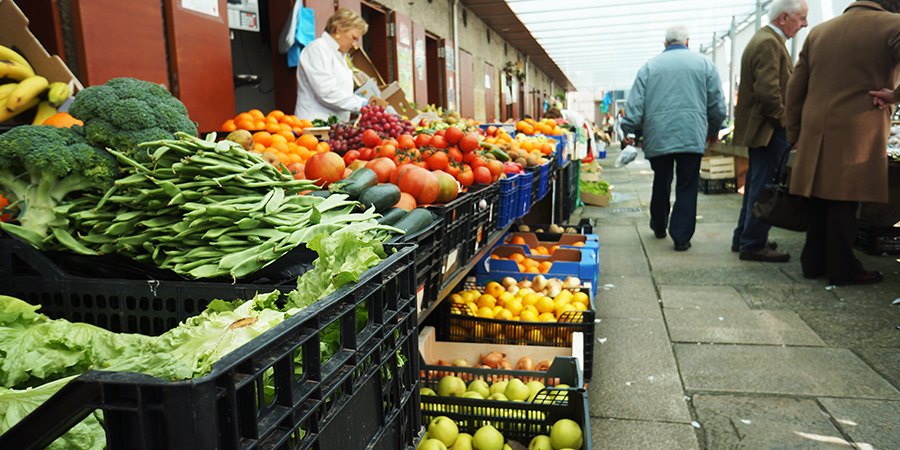
Food in Santiago de Compostela
There are many great restaurants in Santiago de Compostela to suit every budget and culinary taste. You’ll struggle to find a bad meal here, which is why we love Spanish food. If you have time to spare in Santiago, we highly recommend paying a visit to Rúa do Franco. This is the most famous street to go out for a few drinks with friends. Many bars and restaurants along the Franco display their octopus, shellfish and other Galician delicacies in their windows (vegetarians beware!) and most offer a free bite with each drink.
Another unmissable foodie stop in Santiago de Compostela is the wonderful Mercado de Abastos. Santiago’s food market is full of traditional stores run by locals from surrounding farms, along with some chic and stylish stalls. You can pick up some groceries here or treat yourself to something sweet in one of the surrounding cafes.
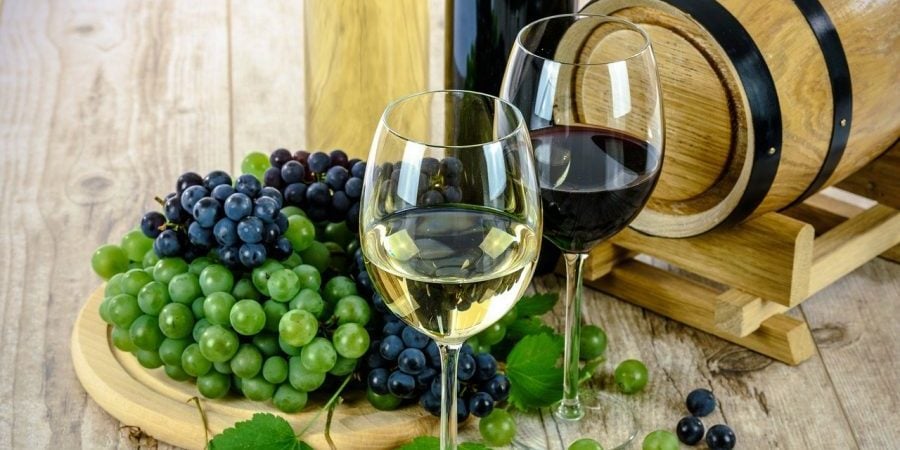
Food & Wine – The Perfect Combination
No dining experience is complete without a complimentary glass of local wine. There are many great food and wine routes along the Camino and you will be spoiled for winning food and wine combinations here. In addition, one of the biggest celebrations of wine on the Camino takes place in Logroño, the capital of La Rioja wine region.
The region celebrates its most famous export with the Fiesta de la Vendimia Riojana, the Rioja Wine Harvest Festival, in late September every year. Walking the Camino from the City of Pamplona to reach Logroño on the Camino Frances you can enjoy this fun-filled festival with Camino walkers and wine lovers from around the world.

Some food Points to Note
Dietary Requirements
It’s no longer uncommon to have a vegetarian or vegan diet and while countries like Spain, Portugal and Italy have traditionally had less options for vegans, being vegetarian on the Camino or even vegan on the Camino has gotten a lot easier. Still, it is good to prepared for the possibility of a lack of availability of vegan options on the Camino. This is especially true in small businesses in rural areas along the Camino. Here the popularity of vegan diets may not be common.
Travelling the Camino de Santiago as a celiac or following a gluten-free diet is absolutely possible with some advance planning. In recent years, awareness of gluten intolerance has increased in Spain, Portugal, and Italy, and many restaurants now offer gluten-free alternatives. However, in smaller villages, gluten-free products may be harder to find, so bringing some snacks or essentials from home is recommended. We also recommend learning how to say “sin gluten” (Spanish) or “sem glúten” (Portuguese) to make communication easier when dining locally.
With a little bit of research and preparation before your Camino, you’ll find it much easier to walk the Camino while maintaining your diet. This is especially true when considering the best snacks for the Camino. If you are booking a trip with us and you have any dietary requirements (allergies, vegan, vegetarian, food intolerances etc.), please make sure to let our team know with as much notice as possible so we can make sure you can enjoy the food on the Camino.

Meal Times on the Camino
It’s really important to be aware of cultural differences while travelling. When you’re walking the Camino, it’s unlikely that you will eat dinner at your usual time if it’s 5-6pm in the evening. When it comes to Spanish food culture, dinner is usually served around 9pm. It’s a good idea to go for some pinchos (tapas) before dinner and eat some snacks to tide you over if you think you’ll struggle to wait until 9pm.
A different mealtime is just another wonderful experience to have on the Camino and it’s worth embracing this change while you’re walking the Camino routes. For more about food on the Camino, read our Camino Food FAQ.

Seasonal Food on the Camino
You might find yourself walking the Camino during the festive season. If you are going for a winter walk on the Camino, you will likely stumble upon many Camino Christmas traditions. It’s good to take note of some of the most delicious Camino Christmas dishes so you’ll know what to look for while on your journey.
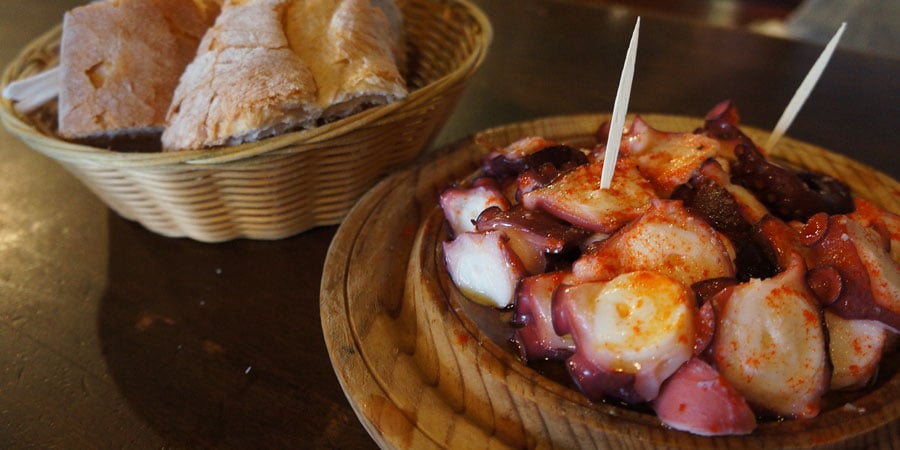
A Typical Day of Food on the Camino
Travelling to the Camino de Santiago with Camino Ways.com? Many walkers booking a Camino de Santiago trip with us ask the Customer Care team about the Food on the Camino options included as part of the standard package.
Our standard package includes half-board accommodation, which means dinner is included at your hotel (usually we don’t include dinner as standard on the first and last night of the trip, as most people prefer to explore and eat out in the most significant towns/cities).
Breakfast
Breakfast is always included in the price of your room (room prices in Spain include breakfast at no additional cost), but the type of breakfast offered will depend on the hotel.
Continental breakfast is the norm, as cooked breakfasts aren’t typical in France, Spain or Portugal. A frequent option will be a buffet-style breakfast including fruit, bread or toast, pastries or cake, cheese and cold meats, coffee, tea and juice.
If there is a particular breakfast cereal or breakfast item you are used to, we recommend you bring it with you or purchase it in the local supermarket.
Lunch
Lunch is generally organised independently. We recommend you visit the local shop at your departure point or stop in the bigger towns/villages along the way to purchase essential supplies, including water, snacks, fruit, etc… Depending on the section of the Camino or route chosen, you might be able to stop at cafés along the way.
Some sections/routes have plenty on offer, while other more remote walking sections will have limited services on the way. Always make sure to check your walking notes or guidebook for availability.
Dinner
Our standard package includes dinners during the trek (apart from the first and last night), and these will be generally the ‘Pilgrim menu’, including three starters to choose from, three mains and dessert.
Starters usually include soup or broth, salad or fish. Mains generally include fish or meat with chips/potatoes and bread.
There is typically a vegetarian option available. Typical deserts will be cheesecake, crème caramel, banoffee and ice cream.
Drinks are generally not included in your menu, although in some cases they might be included free of charge at the hotel’s discretion. Some might provide wine free of charge, but it is not included as standard.
The type of dish will vary depending on the region you are walking, as each area has its own seasonal and local dishes and specialities.
For example, fish will be more common in Galicia, the Northern Coast and the Portuguese coastal regions than in other inland areas.
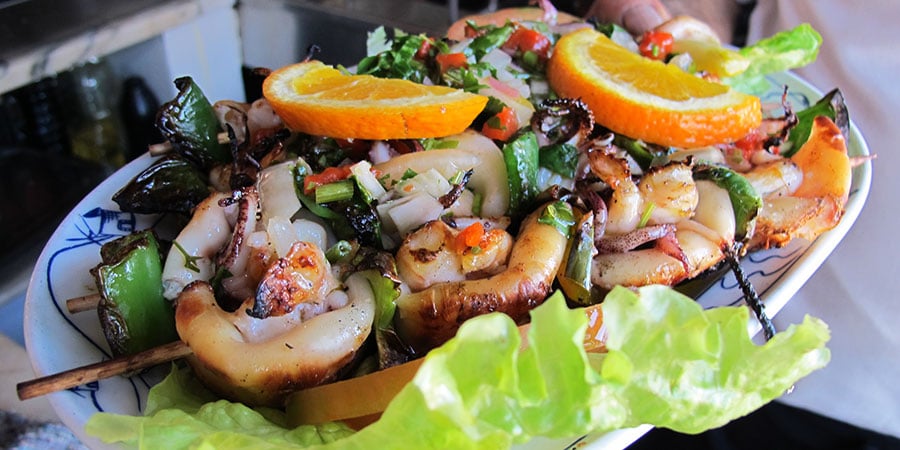
For more delicious Camino food inspiration, please visit the food and wine section of our blog. We also have a free Camino food eBook to help whet your appetite ahead of your next visit to the Camino de Santiago.
If you have any questions or would like some help planning your own foodie Camino, please don’t hesitate to contact us.
FAQs
Q: What food is typical on the Camino de Santiago?
A: Each region has its own dishes, from octopus in Galicia to pintxos in the Basque Country and tapas in La Rioja.
Q: Are vegetarian or vegan options available on the Camino?
A: Yes, though options are more limited in rural areas. Bigger towns and cities cater better to special diets.
Q: What time do people eat dinner on the Camino?
A: Dinner is usually served from 8:30–9:30 p.m. Pilgrims often have tapas or snacks earlier in the evening.
Q: Is wine included with meals on the Camino?
A: Wine is sometimes included with the pilgrim menu, but not always. Local wines like Rioja and Albariño are widely available.
Q: What is a pilgrim menu?
A: It’s a set dinner menu offered to walkers, usually with three choices for starter, main and dessert, at an affordable price.
